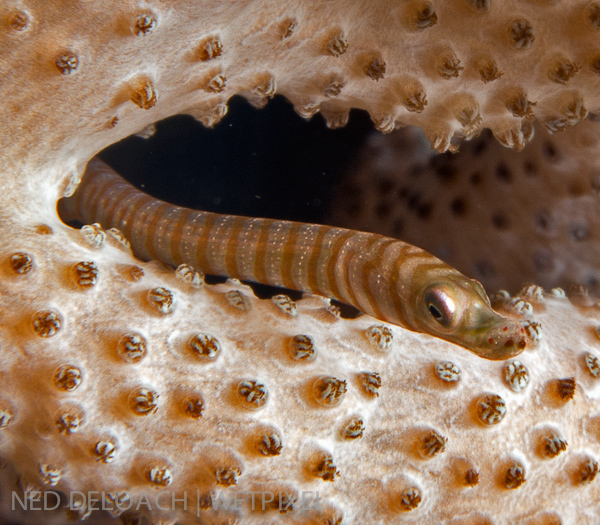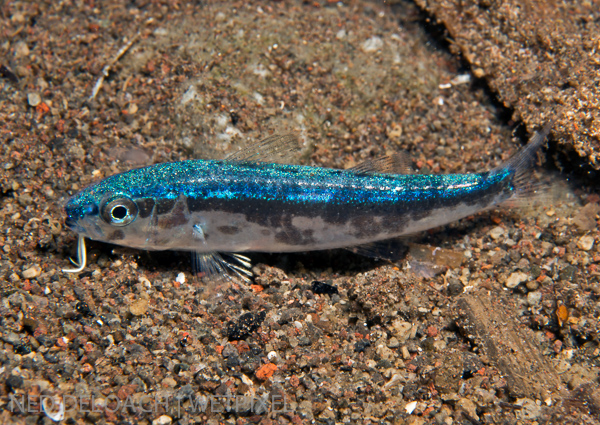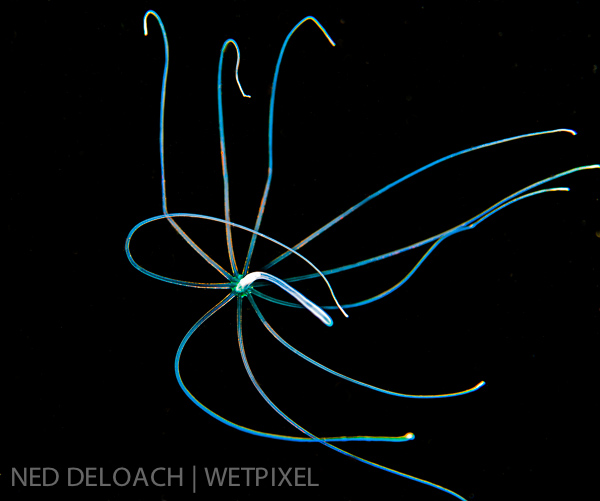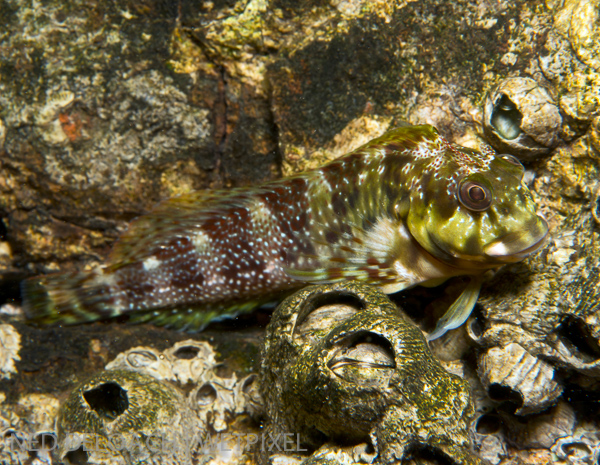Blennwatcher Diary: July 2013

This is a Hairy Blenny. We were surprised by the identification provided by Dr. Ben Victor, one of our go-to ichthyologist friends and larval fish expert. Ben’s actual response was, “Labrisomus cricota (one of the three hairy blenny species, not nuchipinnis).” The surprise was the fact that there are three species of hairy blennies - but that helped make sense of a mystery. I spotted the tiny fish on a concrete piling at the Blue Heron Bridge in Riviera Beach, Florida and Ned took several photos. Back at the picnic bench that we use to gear up, we sat around talking to friends about our sightings and the subject of hairy blennies arose because Anne DuPont and I both thought some of the ones at the Bridge just look a little different. Anne sent her photos and Ned sent ours to Ben and that’s how we all learned that in addition to the Hairy Blenny that we all know (Labrisomus nuchipinnis), there is Labrisomus cricota, the Mock Hairy Blenny (described from Brazil in 2002) and Labrisomus conditus, the Masquerader Hairy Blenny (described by the same authors from Brazil, in 2009). Ben’s larval fish studies reveal that in Florida, 95 percent of the samples are the Masquerader Hairy Blenny and 5 percent are the Mock Hairy Blenny. However, and this is where photographs can play an important role, the authors of the papers cite a photo from Florida as L. nuchipinnis, the original hairy blenny (thanks to Les Wilk for pointing this out), so there is photographic evidence of all three species in Florida. Stay tuned while we review our photos from all over the Caribbean and Florida and try to come up with a reasonable identification key to sort them out.

In our Full Frame article, we talked about how acquiring a search image for an animal after we have seen the species in its natural habitat for the first time makes it much easier to track it down the second time around. On a recent trip through Raja Ampat, our guides on the Dewi Nusantara showed us quite a few of the tiny Soft-coral Pipefish, Siokunichthys breviceps. We knew about this tiny fish but did not have a search image for its size and how it moved about in its soft coral habitat. Even after being shown several of these cryptic fish, it wasn’t easy to find them our own; however understanding their nature and size did make it a little easier to position ourselves for the shots.

On that same trip, I spotted this one-inch settling fish during a night dive. A glittery flash of color caught my eye as it drifted down from above. I followed it to the sandy bottom where I fully expected it to bury into the sand like many other settling fish we’ve seen. We recognized it as a goatfish when Ned downloaded his images and we could see the tiny barbels on its chin.


Last month, on our BlennyWatcher Blog, we posted photos from Ned’s night drift dive in Ambon. Planktonic drifters can be difficult to identify and I labeled two of them as unidentified but we now have a tentative id for one - a larval tube-dwelling anemone (Ceriantharian). Laz Ruda contacted us to say he thought the other was a Heteropod, Atlanta peronii, one that he sees on the blackwater drift dives that he does off Palm Beach. Laz says, “They are quite the planktonic predator….They swing their head and proboscis back and forth like a cobra striking at all kinds of plankton.”

Molly Miller Blennies - how did they get that common name? Several people asked after seeing our post about the spawning Molly Millers (Scartella cristata) at the Blue Heron Bridge. This blenny has a wide range, including both sides of the Atlantic, the Gulf of Mexico, the Mediterranean and Japan, so it has a lot of common names - twenty-eight, according to Fishbase. The earliest reference I’ve found so far for the English name is from a 1906 catalog of Bermuda fishes but there are four different species listed with the same common name of Molly Miller. The request for more information is out to several scientists and so far, Ben Victor has responded with a guess, involving complicated reasoning originating with the fact that in the UK, there is a small fish with the common name of “Miller’s Thumb.” If you know the origin of the name Molly Miller, or would like to offer a (reasonable) suggestion, please share it with us.
We’re off to Utila in a couple of weeks, a new destination for us and home to some unique fishes, like the recently described Redcheek Goby, the endemic Filament Blenny and the Ribbon Blenny. We’re leading a Field Survey for REEF (Reef Environmental Education Foundation) so we’ll be surveying the local fish population with 15 other enthusiasts and hopefully we will be adding new species to our life lists. Fingers crossed for good luck!